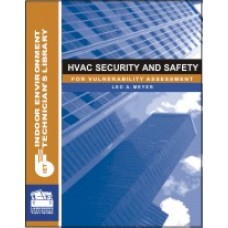Each year the number of wage and hour lawsuits grows. According to the latest statistics released by the Administrative Office of the U.S. Courts, there were approximately 8,781 Fair Labor Standards Act (FLSA) cases filed in 2015. This was a 7.6 percent increase over the previous 12-month period. Indeed, since 2000, the number of wage and hour filings in federal court has increased by more than 450 percent. Even more disturbing is the fact that employers paid approximately $400 million in 2014 (the last year such statistics are available) alone to settle wage and hour lawsuits, with an average payment of $5.3 million per employer, according to the consulting firm NERA Economic Consulting. Employers have paid over $3.6 billion since 2007 to settle wage and hour lawsuits.
Today, wage and hour lawsuits represent the largest category of employment-related class action filings. No single factor has driven this rise. However, the economic downturn coupled with an anemic recovery, increased focus on the minimum wage, high profile victories for plaintiffs’ attorneys, an increasing number of regulations, uncertainty over applying the 77-year old FLSA to modern employment practices, and an overall increase in class action lawsuits have all helped drive the rise in wage and hour filings.
To top off all of this, the U.S. Department of Labor (DOL) announced a revamping of the “white collar” exemptions test, more than doubling the minimum salary threshold for exempt employees. The DOL is expected to issue final regulations sometime in 2016, which will likely be effective shortly thereafter. The last time the DOL made changes to the white collar exemptions, it provided employers with 120 days to implement necessary changes. This time around, however, with the presidential election in play, the DOL may only provide as little as 30 to 60 days for employers to make any necessary changes. It is estimated that the upcoming changes will affect the classification of approximately 4.7 million workers, if not more.
When the changes become effective, employers can expect greater scrutiny and a further increase in wage and hour lawsuits. It is therefore important for employers to understand the upcoming changes to the overtime rules and to begin preparing now.
WAGE AND HOUR LAW, OVERTIME REQUIREMENTS, AND THE NEW REGULATIONS
To avoid lawsuits and legal headaches, employers must remain compliant with all applicable laws and regulations, both federal and state. Some states, such as California for example, have complicated wage and hour regulations that sometimes differ significantly from the federal rules.
The federal FLSA, passed in 1938, guarantees a minimum wage to almost all employees in the United States, and requires employers to pay overtime when employees work more than 40 hours in any workweek. There are, however, several exemptions to the overtime requirements. Employees who are exempt from overtime requirements under federal law most often fall under one (or more) of four exemptions (the so-called “white collar” exemptions): executive, administrative, professional, and computer employees.
Under the FLSA, in order to classify a position as exempt, generally that position must pass both a salary test and a duties test. Currently, the salary test requires a weekly salary of $455 per week (or $23,660 per year). The duties test depends upon the exemption, but typical duties to look for include: directing and supervising the work of others; the authority to hire, fire, and promote; non-manual work; exercising independent judgment and discretion; or advanced knowledge in a field of science and learning through prolonged course of instruction.
Under the announced exemption revisions, the DOL has proposed raising the salary test from $455 per week to $970 per week (or from $23,660 per year to $50,440 per year). In other words, the DOL is planning to more than double the minimum salary for exempt employees.
The DOL has also proposed raising the salary threshold each year, based upon some as yet unspecified economic indicator, providing employers with as little as 60-day notice. Finally, the DOL has suggested that it may also make the duties test harder to meet, but has not explained what changes it will make (if any). All told, the DOL has estimated that the salary change suggested will affect approximately 4.7 million workers.
NEXT STEPS FOR EMPLOYERS
The last time the DOL changed the standards for exempt employees in 2004 the number of wage and hour lawsuits increased. There were 3,617 FLSA cases filed in 2004, 4,039 in 2005, followed by 4,207 in 2006, and jumping to 7,310 in 2007. The pattern is alarming at best. Consequently, now is a good time to take steps to limit any potential exposure.
Review Your Workforce Now and Gather Information
The rule change will require employers to take action. Now is the time for employers to conduct a thorough review of their workforces, in order to gather the information necessary to make informed decisions. This review should be more substantial than simply identifying what exempt employees currently make less than $50,440 per year. Considerations that should be examined include:
• The number of hours potentially affected exempt employees currently work. If those employees become non-exempt, the employer will be required to pay overtime for all hours over 40 in a workweek.
• Potential salary compression issues. For example, where a currently exempt employee makes $40,000 per year and her boss makes $55,000, raising that employee’s wages to $50,440 to bring her into compliance means now her boss only makes about $5,000 more; whereas before she made $15,000 more than her subordinate. Salary compression can have a negative impact on morale and productivity, and obviously affects the bottom line.
• Significantly, the DOL’s proposed rule does not consider differences in pay across regions. Consequently, employers with multistate operations may very well have employees performing the same job in different facilities with different pay scales. How the new rules will affect employers across state lines should be considered.
• Employers should also review any incentive payments or similar compensation potentially affected employees currently receive. If these employees are re-characterized as non-exempt, non-discretionary payments (such as performance-based bonuses) will affect their overtime pay moving forward.
• If employees are reclassified as non-exempt, they will be required to begin accurately keeping track of time worked. This will affect the employee’s ability to go above-and-beyond, perform outside of regular work hours, or put in the extra effort to secure additional training. The effect these changes will have upon a business should be thoroughly considered.
• If your employees routinely perform work at home, including answering emails, this should be reviewed. Once an employee is reclassified as non-exempt, routine and minor work at home can constitute work time, and can expose your company to liability.
Assess the Cost of Compliance
Employers have various options for compliance with the new rules. Employers could simply raise all exempt employees’ wages to at least $50,440 per year. Obviously, this “solution” will be unworkable for many employers. Conversely, employers could simply reclassify every exempt employee making less than $50,440 per year as non-exempt. Once again, this “solution” will also be unworkable in many instances. The appropriate solution will depend upon your company’s specific operations and situation, and there is no silver bullet solution.
Consider Workplace Morale When Making Decisions
Employers should be cognizant of workplace morale and its impact on productivity when deciding on any solution. Simply re-designating previously exempt employees as non-exempt can have significant negative effects. First, many employees will view this as a demotion, especially supervisors who have worked their way up from the crew. Second, previously exempt employees will likely lose work schedule flexibility, benefits that are provided only to exempt employees, and perhaps equally important to many, their status in the workplace.
Consider Alternatives
Employers could also explore alternative methods to help limit the impact of the new regulations, such as the fluctuating work week schedule or moving employees to non-exempt salaried status. However, before making any changes, employers should ensure that they are complying with both state and federal law, which often have different requirements. And employers should remember that alternative arrangements, other than traditional non-exempt or exempt status, often lead to inadvertent violations of the FLSA.
Provide Clear Communication
Whatever steps a company chooses to take to address the problem, clear communication with affected employees will be paramount. Employees who are reclassified as non-exempt will require a clear explanation why, as well as an explanation of new requirements, such as keeping track of their time. In addition, some employees may need to be let go, some jobs may need to be restructured, and some duties may need to be absorbed across several jobs — all of these operational and other changes will need to be carefully explained.
Take Action Sooner Rather Than Later
Employers should not wait until the final rule is released to begin this process. The company-wide review and subsequent decision-making will take time. Ensuring adequate time to make the best informed decision for your company will be important.
Wage and hour complaints have become the most commonplace employment-based lawsuits, and a change in the law frequently results in an increase in lawsuits filed. By being proactive, understanding the new rules, and taking action now, employers can get ahead of the game and limit their exposure.
Publication date: 1/18/2016
Want more HVAC industry news and information? Join The NEWS on Facebook, Twitter, and LinkedIn today!











